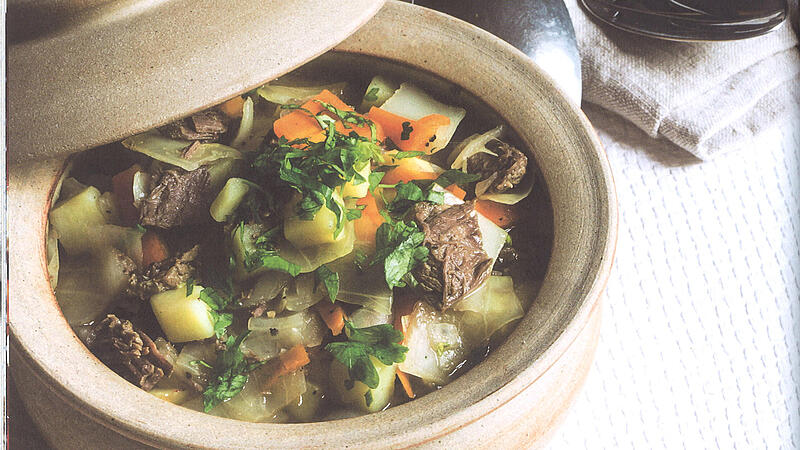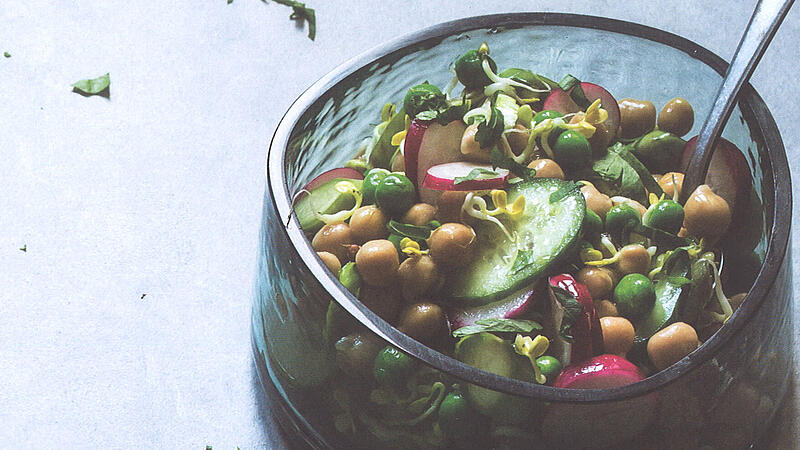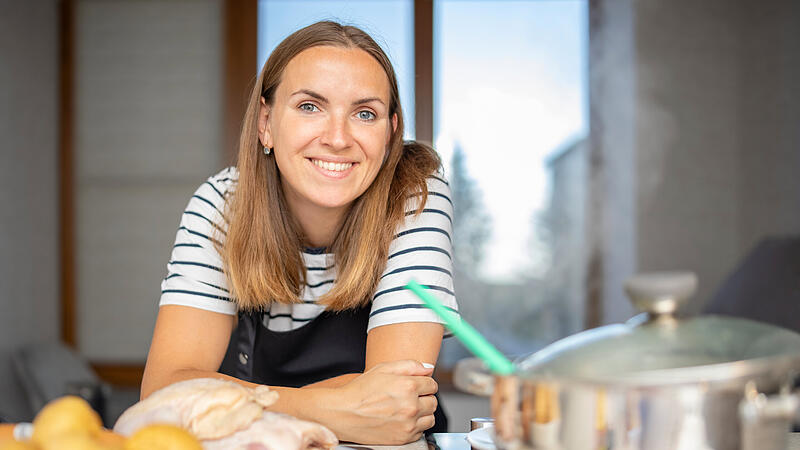Image: Colourbox

Image: Vivi d’Angelo

Image: Vivi d’Angelo
“My grandma was right!” That’s what trained chef Vincent Fricke says, whose catering company specializes in holistic nutrition. Grandma took leftover food from the inn and – like many women of her generation – perfected storage and utilization of leftovers in the kitchen. According to Fricke, a classic from the past is the stew, “probably the greatest and most underrated food genre”. Leftover food can be transformed into tasty dishes with little effort, even if vegetables are no longer as attractive.
Save time and money
According to the German entrepreneur and author, sustainability practiced in the kitchen is not only good for the climate because less food has to be produced and transported – it also saves time and money. The potential in this segment is high: after all, almost 20 kilograms of edible food per Austrian ends up in household waste every year. Reasons for this: Buying too much and the wrong things, cooking too much and planning too little.
Old methods rediscovered
The storage of food in modern households is often not ideal – even though all the technical aids are available. For the rediscovered leftover kitchen, you can use many of the methods of your grandparents’ generation. Fricke reveals the most important tips in his book “Leftover”:
- Shopping: Everything that should always be there is on a basics list – if something runs out, just mark it. A second list contains things that are currently needed in the next few days.
- Stockpiling: Hygienically perfect storage is the be-all and end-all for a long shelf life. It may sound old-fashioned, but the lifespan of food increases significantly in well-sealed containers – especially when fruit and vegetables are cut. Line the bottom of the tin with kitchen paper. It’s good to know what belongs in the fridge and what is better kept at room temperature.
- Preserve: By preserving, fermenting and pickling, many foods can not only be saved, but also refined.
- Use what’s there: When cooking – in contrast to baking – the exact quantities are often not important. You can be creative. By visually checking, smelling and tasting, you can check whether food is still good – even beyond the expiry date. Peels can also often be used – for example those from vegetables for soups.
- Second chance: When the family gets together, they often cook too much. Store these leftovers well and enjoy them later.
- Book tip: V. Fricke, V. D’Angelo, T. Euler: “Leftover: There’s more in your fridge than you think”, Eugen Ulmer publishing house, 30.90 euros

Image: Vivi d’Angelo
Stew: Bavarian Stew
Ingredients:
approx. 700 g thin crown meat (soup meat), 1 onion, 1 tbsp mustard seed, 1 tsp coriander seed, 4 allspice seeds, 4 juniper berries, 1 tsp pepper (whole), 2 bay leaves, 3 carrots, ¼ celery, 5 potatoes, ½ white cabbage, 1 –2 mustard fruits, 1-2 sprigs of thyme, 1 bunch of parsley, salt and pepper
- 1. Dab the meat with kitchen paper, place it in 4 liters of cold water, bring to the boil, skim off the foam.
- 2. Cook with the whole onion, spices (except thyme and mustard fruits) and 3-4 pinches of salt over medium heat for 2 hours. Remove the meat, cover it with a damp kitchen towel, let it cool slightly and tear it roughly.
- 3. Peel carrots, celery and potatoes and cut into small cubes. Cut the cabbage into 3-4 cm pieces and finely chop the mustard fruits.
- 4. Strain the broth through a sieve, add the meat and vegetables and cook over medium heat for 20-30 minutes until soft. Add the mustard fruits and thyme only at the end of the cooking process.
- 5. Season the soup with salt and pepper and garnish with chopped parsley.
Tip: The amounts of vegetables are variable. Leftovers are easy to save.

Image: Vivi d’Angelo
Veggie bowl with chickpeas
Ingredients:
Chickpeas (dried), raw vegetables (broccoli, cucumber, fennel, carrot, kohlrabi, peppers, rocket, celery, radishes, sprouts, salads, tomatoes, etc.), fresh coriander, white wine vinegar, vegetable oil, salt and pepper
- 1. Soak the chickpeas overnight (at least 8 hours), cook in unsalted water over medium heat for about 1.5 hours. The chickpeas should be soft but still have some residual bite.
- 2. Wash vegetables and cut into pieces. Some things can also be grated (mushrooms, beets, cabbage, pumpkin, turnips).
- 3. Drain the chickpeas and mix with the vegetables in a large bowl. Add vinegar and oil to taste. Season with salt and pepper.
- 4. Fold in the coriander and serve.
Tip: Vegetables that are already past their “best days” can be cut into strips or slices and briefly simmered in their own juice in a little vegetable oil with thyme, rosemary and a clove of garlic (but they should remain crunchy). Then add salt and pepper and pour plenty of olive oil over it. Allow to cool slightly before serving.
Mix with the lettuce in a bowl, distribute on plates, grate hard cheese over it.
My themes
For your saved topics were
new articles found.

info By clicking on the icon you can add the keyword to your topics.
info
By clicking on the icon you open your “my topics” page. They have of 15 keywords saved and would have to remove keywords.
info By clicking on the icon you can remove the keyword from your topics.
Add the topic to your topics.
Source: Nachrichten




